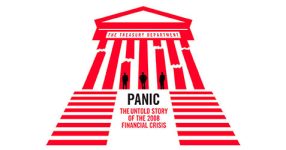In the realm of business, success stories often leave us in awe, wondering what magic ingredients are behind the achievements of the world’s most prominent brands. In this exploration of “The Economics Of” success, we’ll dissect the unique business models that have propelled companies like Chick-fil-A, Costco, Starbucks, IKEA, Crocs, Dollar General, Sephora, Target, Airbnb, and Home Depot to the pinnacle of their respective industries.
Chick-fil-A: Serving More Than Chicken
Chick-fil-A, the beloved fast-food chain, has soared to greatness by focusing on more than just the delectable taste of their chicken sandwiches. This Atlanta-based company boasts a distinctive business model that includes limited operating hours, a simplified menu, and a robust commitment to employee training and values. By providing exceptional customer service and quality food, Chick-fil-A has cultivated a devoted customer base, making it the third-largest fast-food chain in the United States.
Costco: The Power of Membership and Value
Costco’s business model is all about attracting and retaining loyal members through its value proposition. With a wide selection of products, competitive pricing, and unwavering attention to customer satisfaction, Costco emphasizes high sales volumes and membership fees over profit margins. This strategy has not only contributed to its sustained growth but also solidified its financial success in the competitive retail landscape.
Starbucks: Brewing Success through Brand and Experience
Starbucks has redefined the coffee industry by creating a distinctive brand and providing a welcoming and comfortable environment for its customers. High-quality coffee and diverse product offerings have made Starbucks a global phenomenon. Their focus on sustainability, social responsibility, and customer engagement has played a pivotal role in their enduring popularity and global expansion.
IKEA: Affordable Stylish Living for All
IKEA, the global furniture retail powerhouse, has revolutionized the industry by offering stylish and affordable products. Their unique business model combines self-serve shopping, flat-pack furniture, and in-store displays that mimic real home environments. Committed to sustainability, cost efficiency, and democratic design, IKEA has become the go-to destination for home furnishings worldwide.
Crocs: A Resilient Comeback
From near bankruptcy to a thriving footwear company, Crocs’ resurgence is credited to its distinctive product design, comfort, and versatility. Innovative marketing strategies, celebrity and influencer collaborations, and an increased focus on e-commerce have revitalized the brand and expanded its customer base.
Dollar General: Catering to Underserved Communities
Dollar General has become one of the most profitable retailers in the United States by targeting lower-income communities and offering affordable products in convenient locations. Their success is rooted in deliberate store location selection, limited product offerings, and a low-cost operating model, even though it has faced criticism for potential negative impacts on local communities.
Sephora: Redefining Beauty Retail
Sephora has disrupted the beauty industry with its assisted self-service model, extensive product offerings, and inclusive approach to beauty. By providing a unique shopping experience, featuring a diverse range of brands and personalized recommendations, Sephora has solidified its position as a leader in the beauty retail space. Partnerships with influential beauty brands and investments in innovative technologies have further propelled its success.
Target: Affordable Chic for All
Target’s unique blend of visual aesthetics and discounted prices has set it apart as a cheap yet chic retailer. Their strategic store designs, convenient locations, and diverse product offerings cater to a wide range of customers, positioning Target for continuous growth and adaptability in a rapidly changing market.
Airbnb: Transforming Hospitality through Sharing
Airbnb has disrupted the hospitality industry by offering unique accommodations and personalized travel experiences. By tapping into the sharing economy, providing flexible options for travelers, and leveraging digital platforms, Airbnb has become a leader in the accommodations market. Despite challenges related to safety and regulations, their focus on local stays, partnerships with cities, and expansion into long-term rentals have secured their place at the forefront of the industry.
Home Depot: Building a Home Improvement Empire
Home Depot, the world’s largest home improvement retailer, offers a one-stop shopping experience for DIY customers and professional contractors alike. Competitive pricing, investment in supply chain and distribution capabilities, and a focus on professional customers have solidified Home Depot’s position as a leader in the home improvement retail industry.
In conclusion, “The Economics Of” success for these renowned brands involves distinct strategies, unwavering commitment to quality and values, and a deep understanding of their customers’ needs. Each has carved its unique path to greatness, contributing to their enduring legacies in the world of business.












